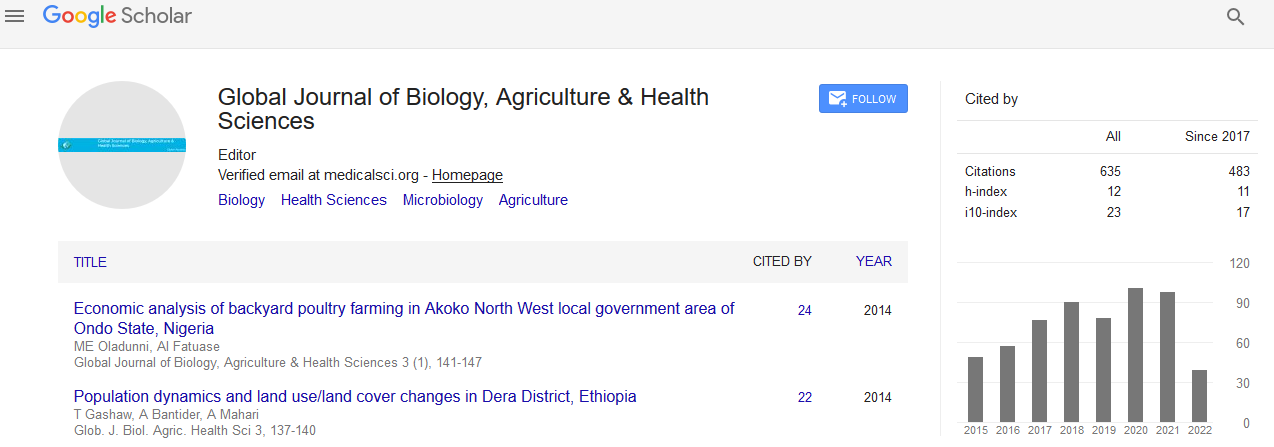Indexed In
- Euro Pub
- Google Scholar
Useful Links
Share This Page
Journal Flyer

Open Access Journals
- Agri and Aquaculture
- Biochemistry
- Bioinformatics & Systems Biology
- Business & Management
- Chemistry
- Clinical Sciences
- Engineering
- Food & Nutrition
- General Science
- Genetics & Molecular Biology
- Immunology & Microbiology
- Medical Sciences
- Neuroscience & Psychology
- Nursing & Health Care
- Pharmaceutical Sciences
Abstract
Absorption Kinetics of Monosaccharides, Disaccharides and its Combination with its Impact on Glucose Availability
Ramesh Prajapati*, Jogeswar Mahapatra, Manoranjan Sharma, Abhishek Jha, Randeep Patro, Shilpa Dhar, Pravin Chondhekar, Pratibha Purohit, Abhijit Chatterjee and Govindarajan Raghavan
Carbohydrates are the primary macronutrients that humans consume to support the body’s need for a source of energy. Monosaccharides like glucose are the simplest form of carbohydrate that is readily absorbed in the bloodstream, followed by disaccharides like sucrose, which are converted into glucose prior to absorption and energy release. To evaluate the absorption, distribution, and absorption kinetics of glucose, sucrose, and a combination of the two in the bloodstream, a preclinical study was conducted in Sprague Dawley (SD) rats showing instant and sustained energy release through the change in blood glucose level after intake of the test product. The data of blood glucose tested using a glucometer were analyzed and evaluated using a regression method. The comparison study determines whether monosaccharides, disaccharides, or a blend of both have an impact on absorption kinetics and sustenance of blood glucose levels. The result showed glucose was absorbed in the bloodstream at a faster rate as early as 60 seconds (onset time) than sucrose and peaked within 30 minutes thus providing instant energy. Additionally, sucrose and its combination with glucose maintained blood glucose levels for a longer duration compared to glucose alone with a lower regression slope of 0.744 (sucrose) vs. 1.247 (glucose). Sucrose and its combination with glucose provide slow and steady energy release up to 4 hours. In conclusion, glucose provides instant energy, while sucrose and its combination with glucose provided sustained energy release after intake.
Published Date: 2023-03-16; Received Date: 2022-12-16

